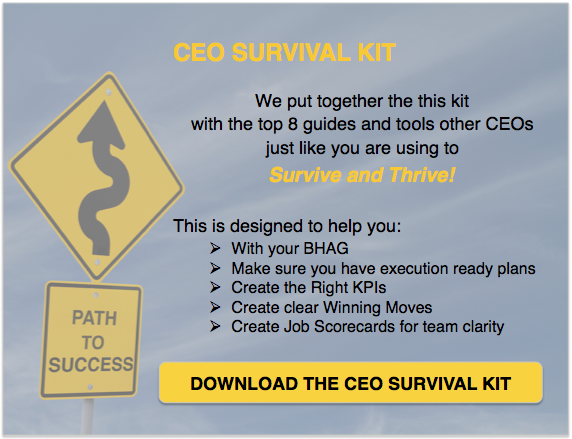No matter who they are or what they're doing, every person and organization experiences problems,  difficulties, unexpected reversals and crises that knock them off balance. We call it being blindsided, and I’ve yet to find anyone that has avoided it.
difficulties, unexpected reversals and crises that knock them off balance. We call it being blindsided, and I’ve yet to find anyone that has avoided it.
Organizations are threatened by loss of sales, new competitors and changing economic conditions. Our lives are affected by personal, financial or health crises. What differentiates us from each other is how we handle those stressful situations. How can you make sure you are on the right side of each situation - that is, reaching for predictable results?
Below is the STIC approach to leverage stress.
Stay Calm
Reacting (or overreacting) to stress will negatively shut down your brain. When you are in the moment, start by taking a deep breath and then thinking carefully about your next words and actions. If needed, buy yourself time with phrases like: tell me more, I’d like to hear more of your thoughts, before I answer, tell me more about what you’re thinking?
Take Control
Make better decisions by accepting 100% responsibility for yourself and for everything that happens from this minute forward. Even in horrible situations, you have choices. They may be bad choices, but you have choices. Recognizing choice reduces stress and gives clarity of thought, and clarity of thought leads to clarity of purpose.
Interpret
During times of stress or crisis, we are often swamped with more tasks than we can realistically handle. In order to garner the calmness and self-control you need, interpret the list of effort needed into a language your mind can comprehend. Something like now, later, never, or today, tomorrow, this week.
Cut Back
Follow in the footsteps of professional athletes, who eat the right foods, do the right exercise, and get plenty of rest. Cut back. The food-exercise-sleep combination creates the perfect trifecta for clear thought.
Next time you are faced with crisis or stress, leverage it by moving on the Three Action Steps below and you’ll gain composure, relieve stress, and move ahead.
3 Action Steps:
- Think back to one of the most recent crises or stressful situations you have faced. What was your first reaction? What could you have done or said differently, to stay calm, move forward and take control?
- How can you simplify your personal and professional life today? Take a hard look at what you spend your energy on, with the 80/20 principle in mind. Do you spend 80% of your resources (time, thoughts, finances, etc.) on the most important issues?
- Are you thinking like a professional athlete when it comes to handling stress? Which part of the diet/sleep/exercise do you need to invest in so you can maintain clarity and improve your ability to handle stress?
You know the feelings that come with your stress and tension. A feeling of dread, impending doom. Your neck and shoulders get tense, your palms get sweaty and clammy, your heart starts to race, your blood pressure goes up, your breathing gets rapid and shallow, and your anxiety level increases.
Superior athletes re-assign these symptoms, and put a positive spin on them. You want those butterflies in your stomach before the game—you just want them flying in the right formation, all in the same direction! These mindsets have positive connotations, yet they are very similar to the symptoms of anxiety, aren’t they? The key is to effectively identify and leverage your stress – only then can you properly manage the situation and move forward.
To be predictably successful, you need to identify your primary sources of anxiety.
(1) Identify the situation you want to focus on: a speech, a meeting, writing an email, developing a strategic plan, or anything else related to your situation and the performance you desire.
(2) Write down your first five feelings, signs, or symptoms.
(3) Identify where these symptoms are located in your brain or body. Repeat this exercise for other situations to get a complete picture of your sources and manifestations of stress and anxiety.
Now that you have a better idea of what causes your anxiety, how it affects you, and where it is felt in your body, you can do something about it. Attach anxiety to the task to get your focus off the anxiety itself. Focus solely on the task (and stop thinking about your symptoms) to starve your anxiety and increase your leverage over stress on the path to success.
Photo Credit: iStock by Getty Images
Photo Credit: iStock by Getty Images



 LinkedIn
LinkedIn
 Facebook
Facebook
